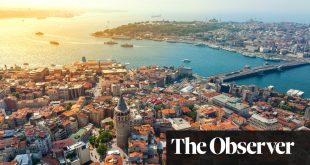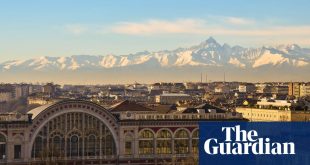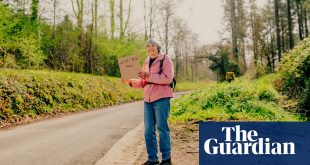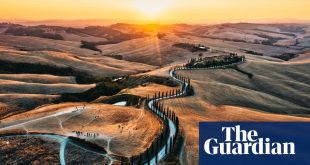The Austrian Alps are known for their visually dramatic walking trails. But equally alluring are the sumptuous spa-hotels where hikers can relax aching limbs in a maze of saunas and steam rooms, all scented with eucalyptus. And no spa is more labyrinthine than the radioactive caves I found myself (naked) in in Bad Gastein.
This elegant spa town was built on a rocky perch beside a spectacular waterfall in the declining years of the Austro-Hungarian empire: in the late 19th and early 20th centuries, belle époque hotels were tapping the radon-rich thermal waters to offer curative stays to bourgeois visitors.
As taking the waters fell out of fashion, many of these gems were boarded up, despite Bad Gastein being a buzzing ski destination in winter. The town could have copied many other ski resorts, particularly those in Switzerland, and allowed new buildings to be knocked up all over the mountainside. Instead, in its post-lockdown redevelopment, it has made sure all “new” hotels are in conversions of existing buildings. Even the Comodo, which advertises itself as a new design hotel, is a converted sanatorium. And 1 September saw the opening of the Grand Hotel Straubinger, whose solid, round arches ooze Habsburg grandeur. Three more hotels soon followed.
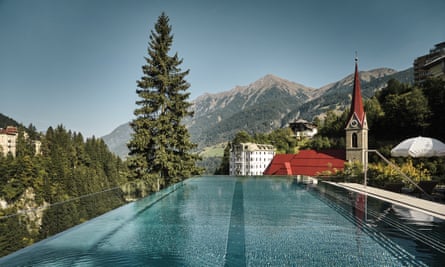
Bad Gastein is served by regular direct trains from Salzburg and Vienna. Though close to the town, the station is 100 metres above most of it, so the resort is building the Vertical Link, a tunnel with moving walkways to allow pedestrians to avoid climbing steep, narrow streets.
At the end of another tunnel is the most extraordinary “wellness” centre. The Gasteiner Heilstollen promises to rid visitors of any niggling aches and pains by nuking them in its radon-rich caves. If that sounds alarming, there are many radon-rich parts of the UK, notably Wales and the West Country. The management says a visit is safe, as it involves a very low exposure to radon; about a tenth of the radiation of an X-ray. Less well-evidenced are the claims of health benefits, although many Austrian visitors get a trip here on their health insurance. This nation of wellness fans takes spas very seriously.
On arriving at the Gasteiner Heilstollen, my husband and I first had an appointment with a doctor. I had wanted to ask him whether the caves might help my eczema – skin complaints and joint pain being among the ailments for which workers in this old silver mine noticed unexpected improvements. However, my husband, who works for the NHS, insisted on interrogating him about the somewhat shaky evidence base, throwing our doctor on the defensive, so we were soon out of time.
We were nonetheless cleared for treatment, seemingly because of our OK blood pressure readings, and sat in dressing gowns in the waiting room watching an educational video showing a smiling train driver in a bikini taking visitors to different zones in the mountain.

Then the train itself pulled up, not driven by the bikini-clad woman. We stepped into one of its carriages and a few people on stretchers were loaded on to something more akin to a sleeping car. And so we started our journey towards the centre of the Earth.
The temperature in the waiting room had been pleasant. Cool even. As the train headed deeper into the mountain, we felt first warm, then distinctly hot, and soon – casting prudishness aside – we and our fellow guests were stripping down to our swimsuits in the carriage.
Our destination – about 1½ miles into the mountain – was a series of tunnels off the train tracks with beds on either side where we lay on our towels, took off our swimming costumes and, well, soaked up the radiation. It was a rather pleasant experience – a little different from soaking up solar rays – and at regular intervals a doctor with a towel around his waist came to check on us. He reassured us that the dose was too low to be dangerous. I think I must have nodded off, as the 60 minutes seemed to whiz by.
Then it was back on the train and into a 25-minute massage and a drink in the relaxation rooms, all included in the €84 introductory offer.
after newsletter promotion
The caves are just one of a host of weird and wonderful treatments in Gastein, which also include Forest bathing is another. We tried an alpaca tour, said to be especially good for troubled teenagers, as these stubborn creatures will stop or lie down as soon as anyone gets too stressed around them. Which evidently I was, as I managed to walk mine just 100 metres, after which no amount of cuddling and coaxing shifted the beast.
For the most part, we simply enjoyed hiking under snow-capped peaks, pulling on our boots every morning to head out on pine needle-coated paths. Setting off to the tolling of church bells in the valley, we climbed staircases made of tree roots or slabs of rock to reach open pastures. And when the sun got too much, paths led us into the cool of the woods and a series of tiny cafes – many little more than the verandas of farmhouses, where we enjoyedcrisp, homemade apple strudel and custard with coffee.

The trails are helpfully colour-coded like ski pistes in terms of difficulty. Indeed, the Gastein valley is part of the giant Ski Amadé network, but you would never guess it in summer or autumn. Austria’s rugged, natural pistes are often simply snow-covered meadows and walking paths, unlike the manicured runs in the big, purpose-built resorts of France.
Some ski lifts operate in summer, so can be used to cut down on the climbing. For me it’s not the going up that’s the problem but the coming down: my knees don’t like it. So where there weren’t lifts, we fashioned walking poles from fallen branches.
All the time I was monitoring the effect the caves had had on all my niggly ailments. I did feel better, and my eczema improved. But how much of that was down to the holiday spirit, and how much to radon exposure? Perhaps it doesn’t matter.
The trip was provided by Gastein, Salzburgerland and the Austria tourist board. Entry to the Gasteiner Heilstollen costs €67, or €84 including a 25-minute massage and a drink
 Top Naija News: Nigerian News, Breaking News Nigeria and World News Top Naija News is a daily news publication in Nigeria, delivering the latest breaking news in Nigeria and around the world.
Top Naija News: Nigerian News, Breaking News Nigeria and World News Top Naija News is a daily news publication in Nigeria, delivering the latest breaking news in Nigeria and around the world.
